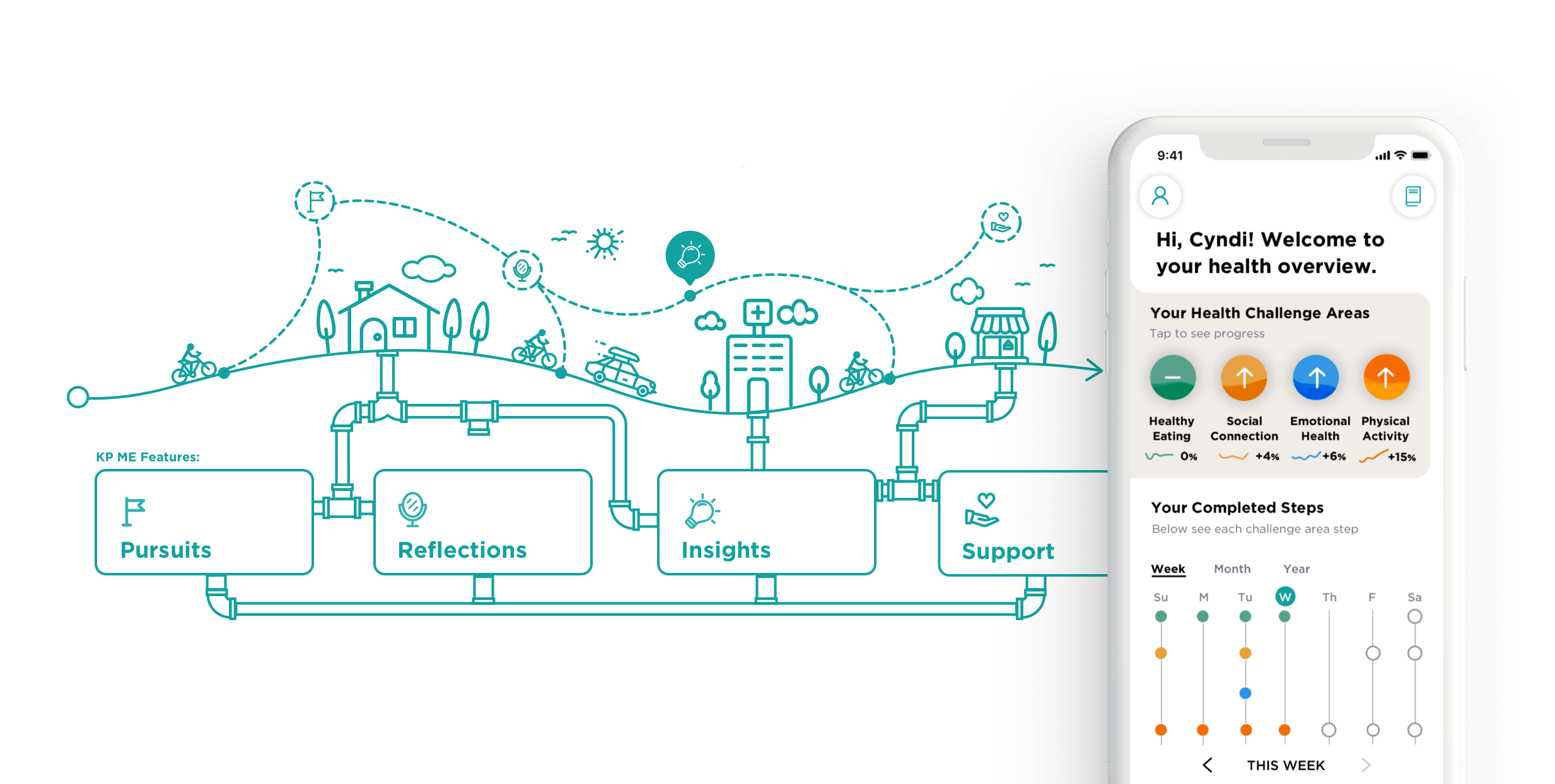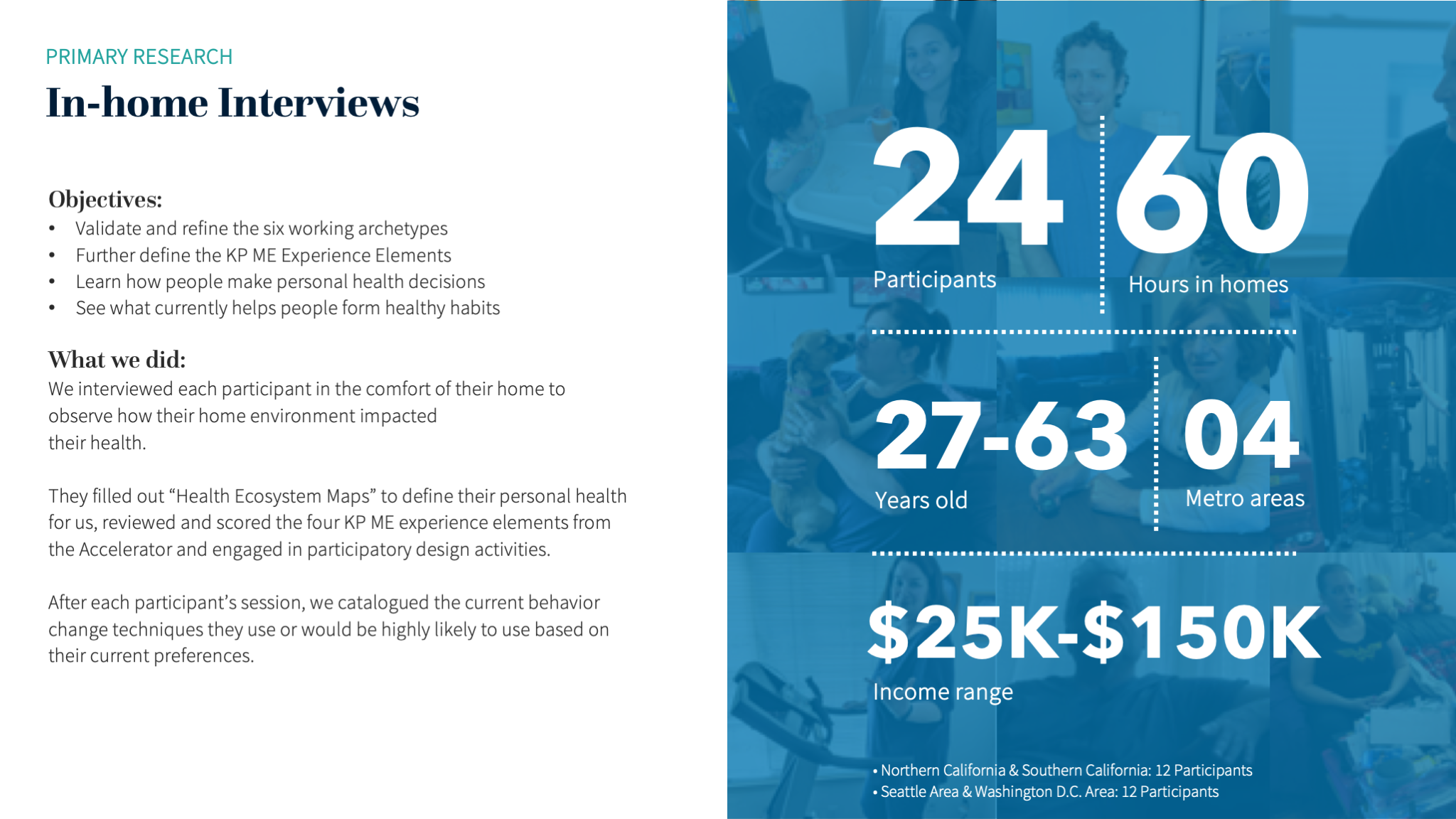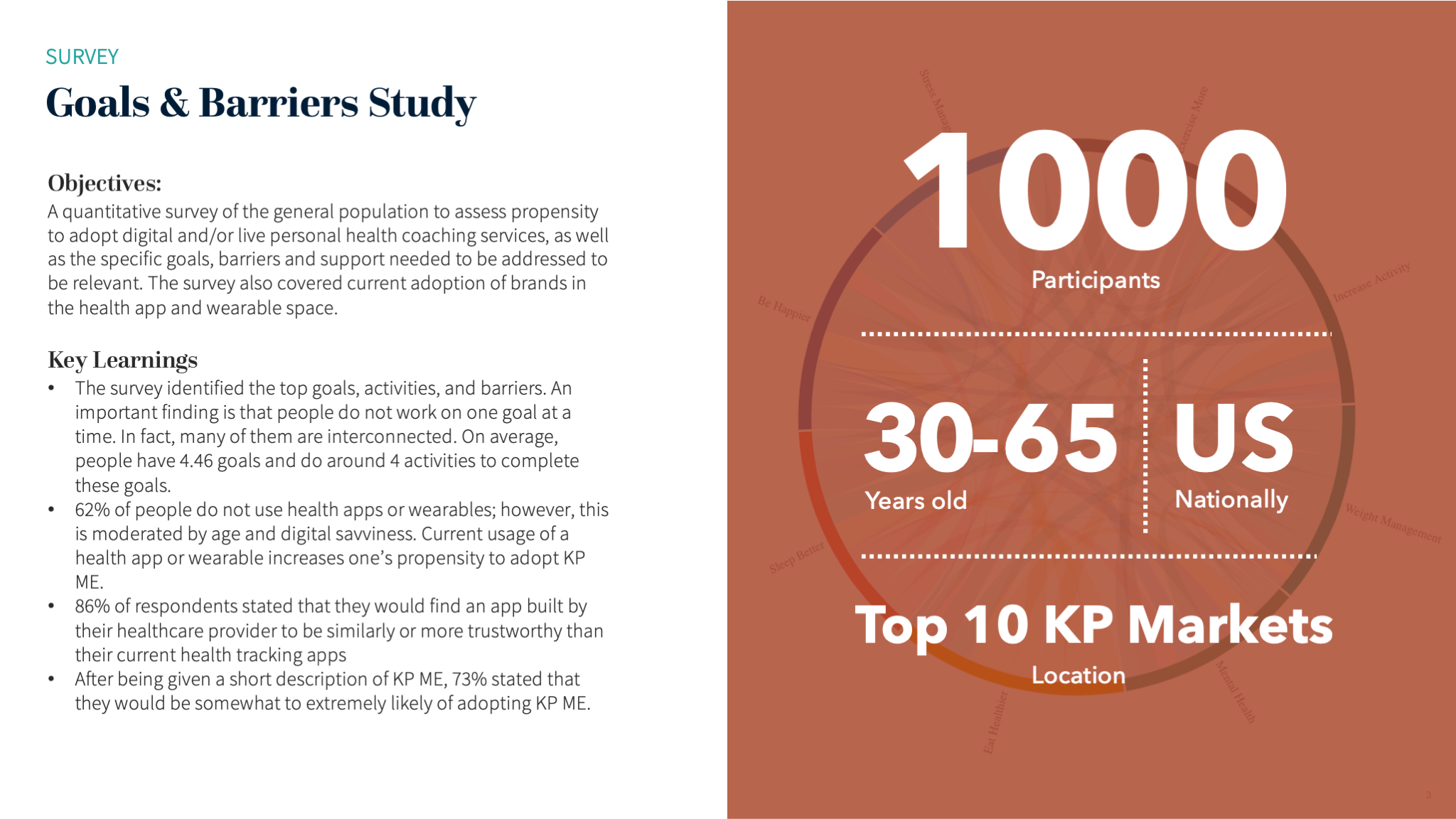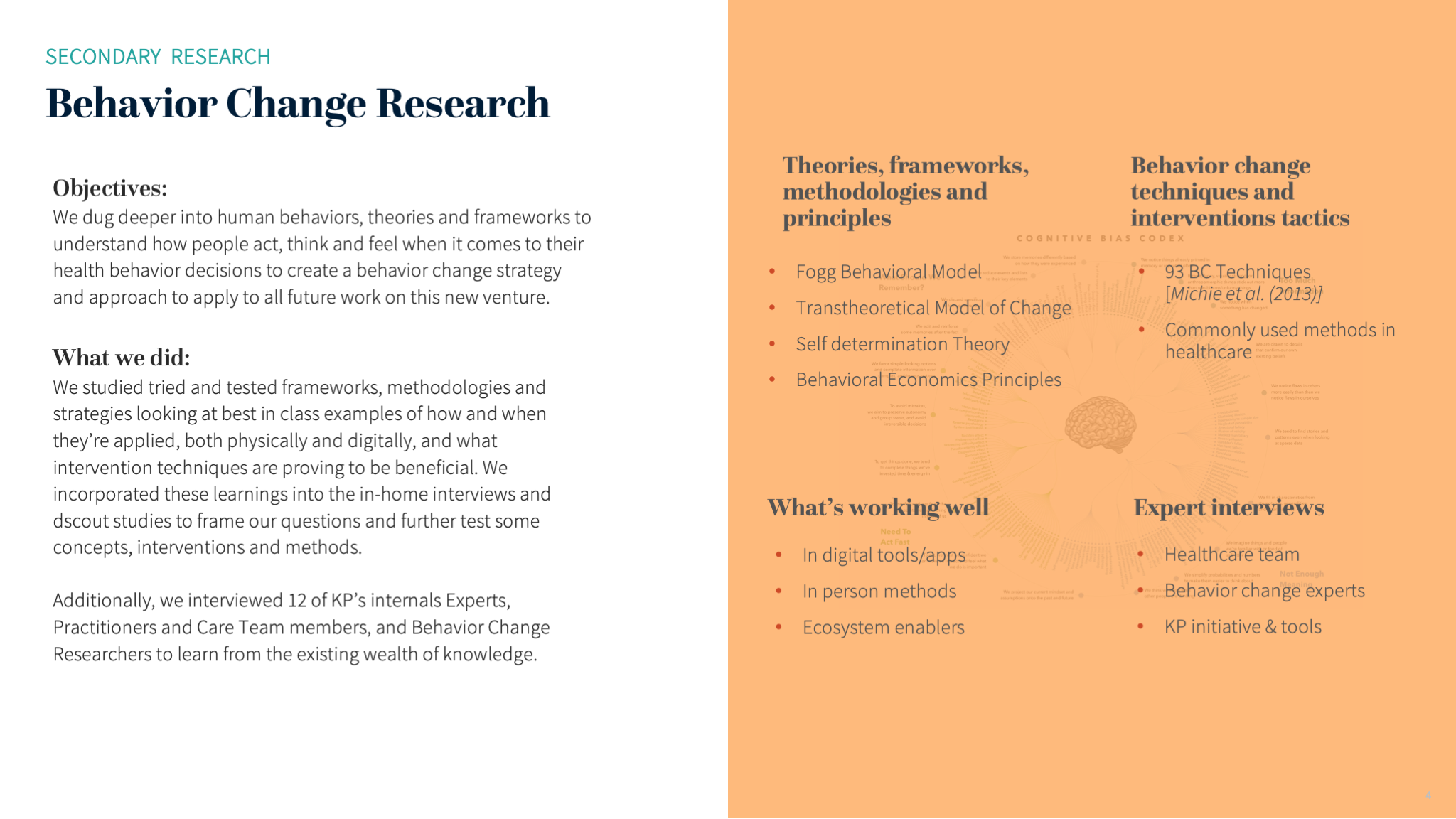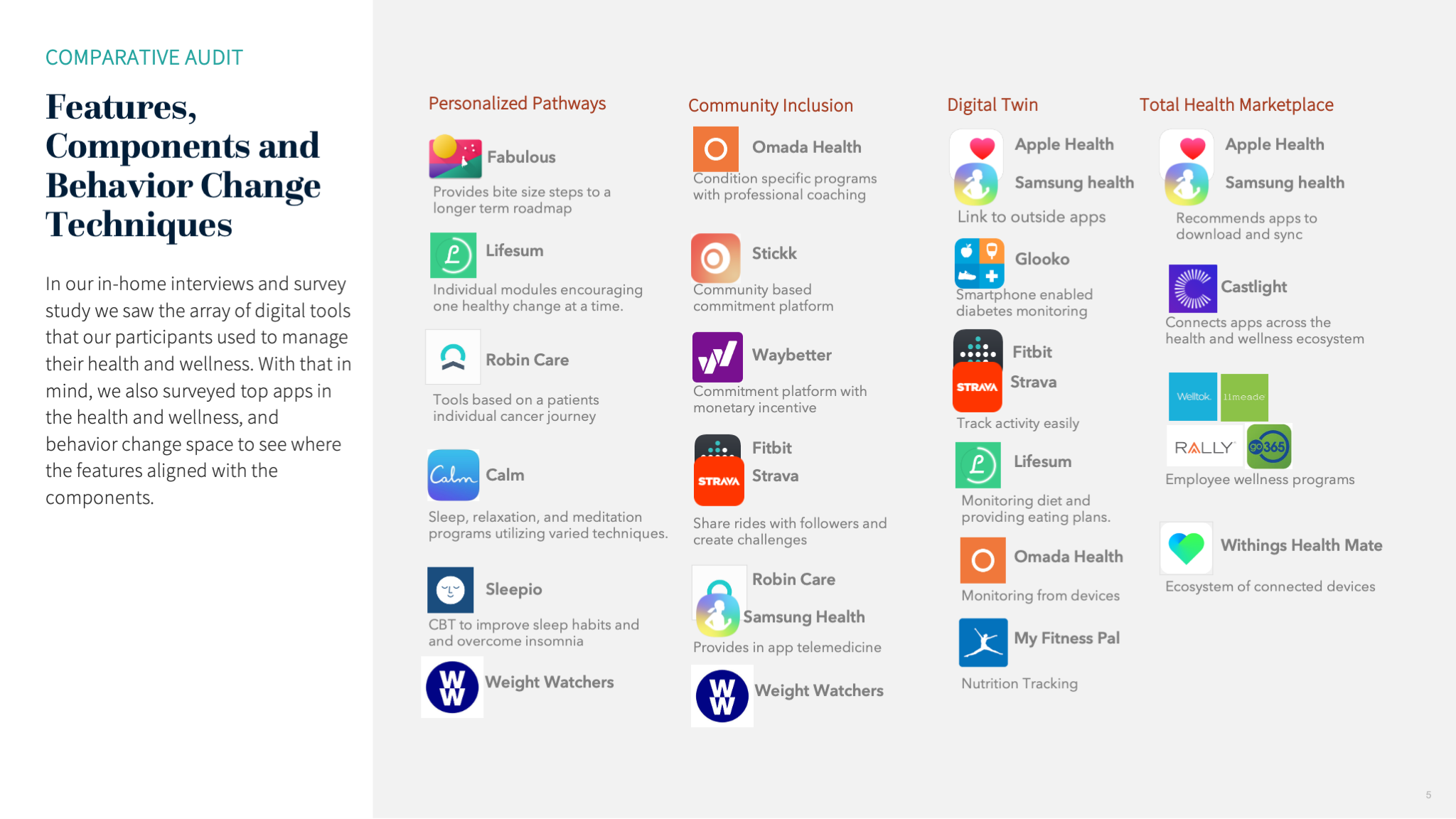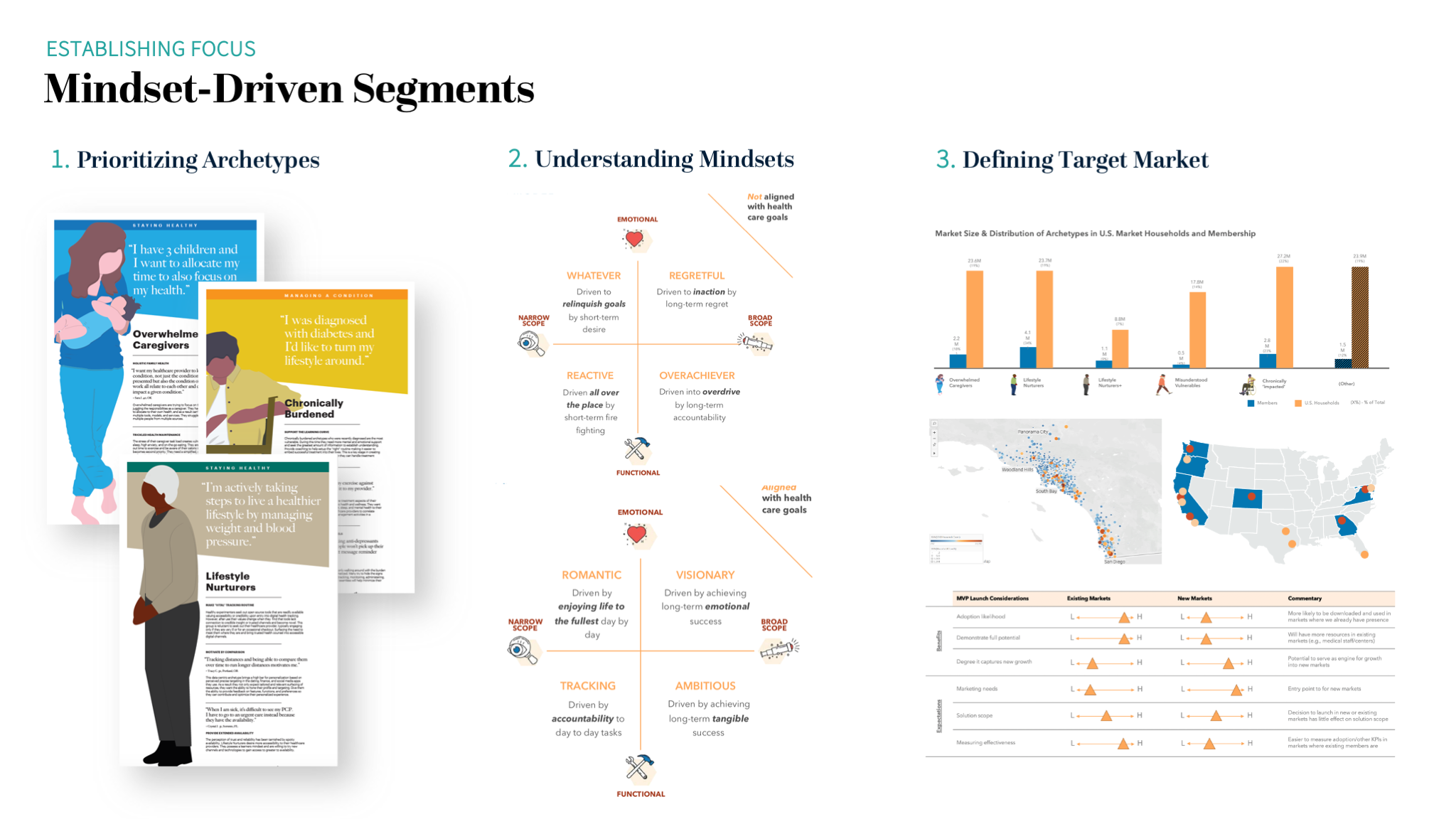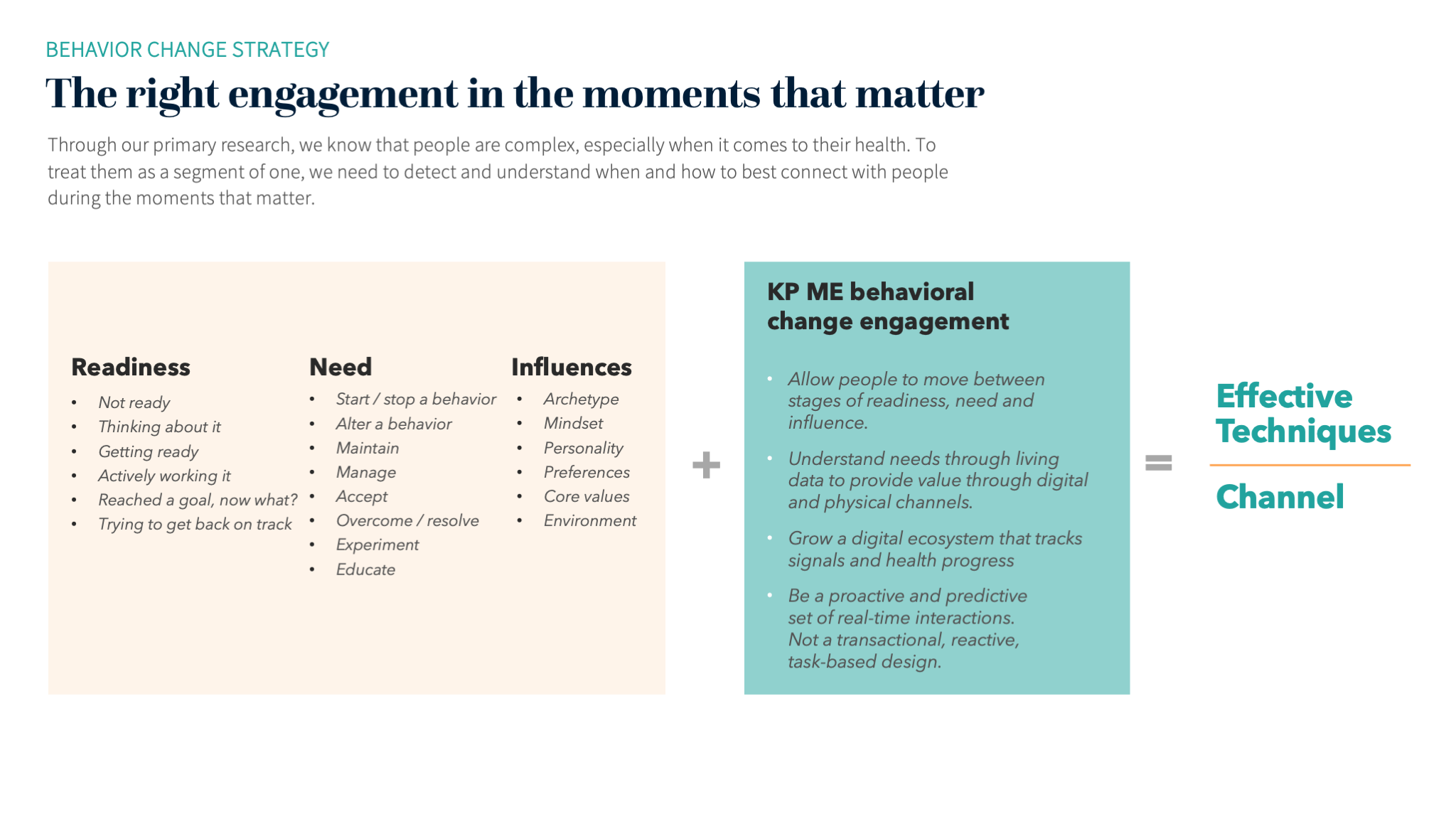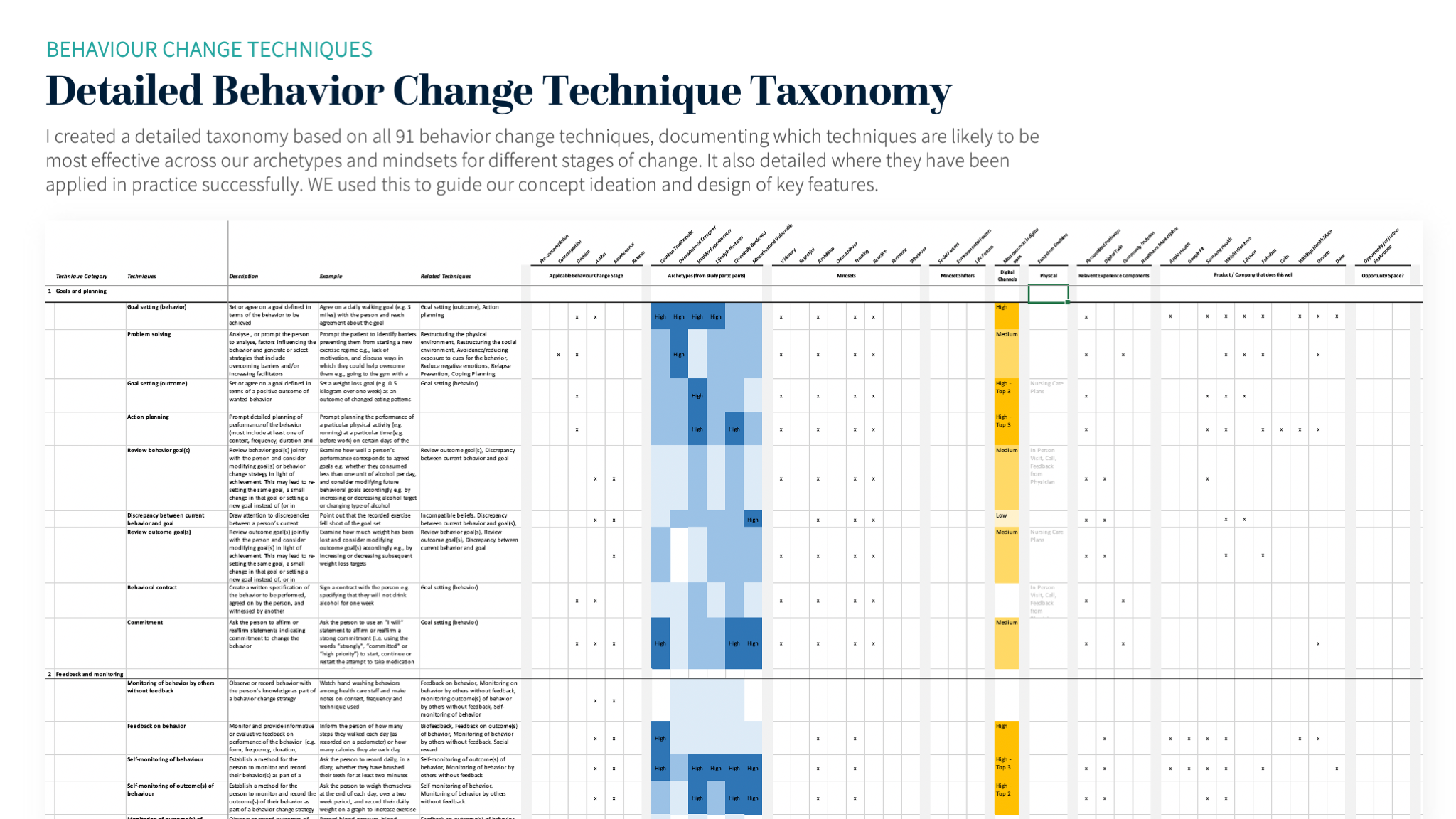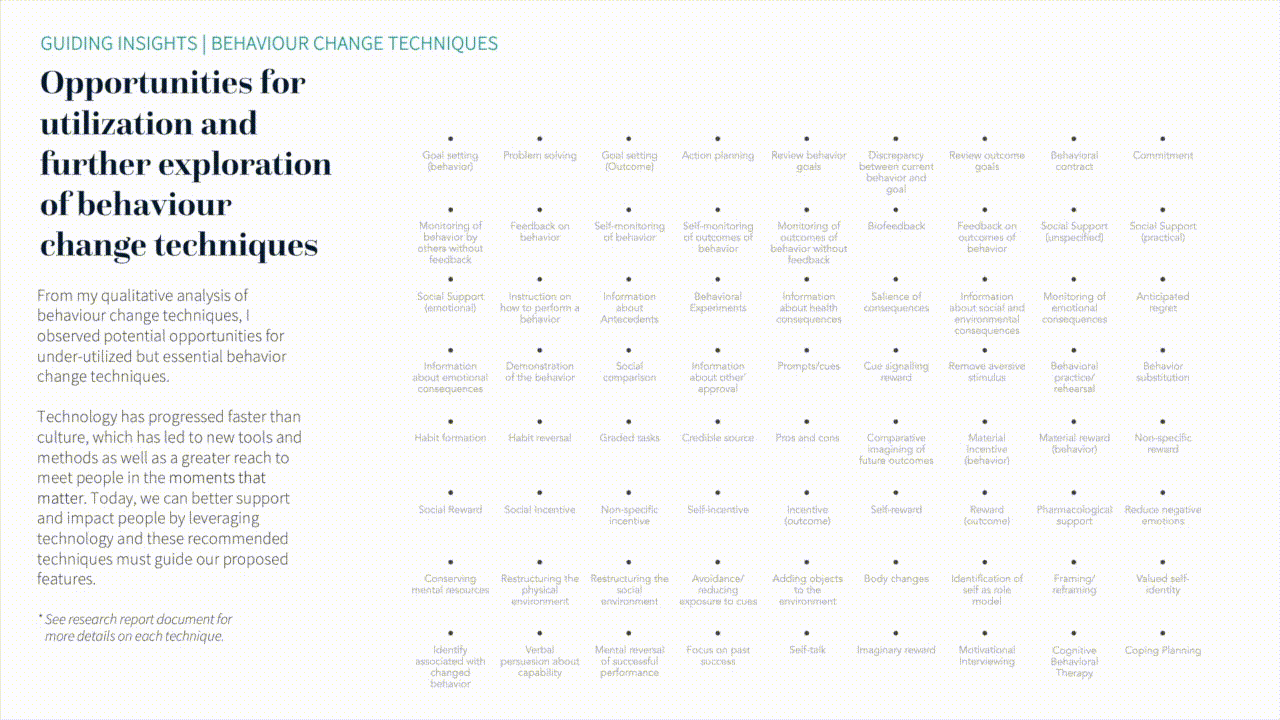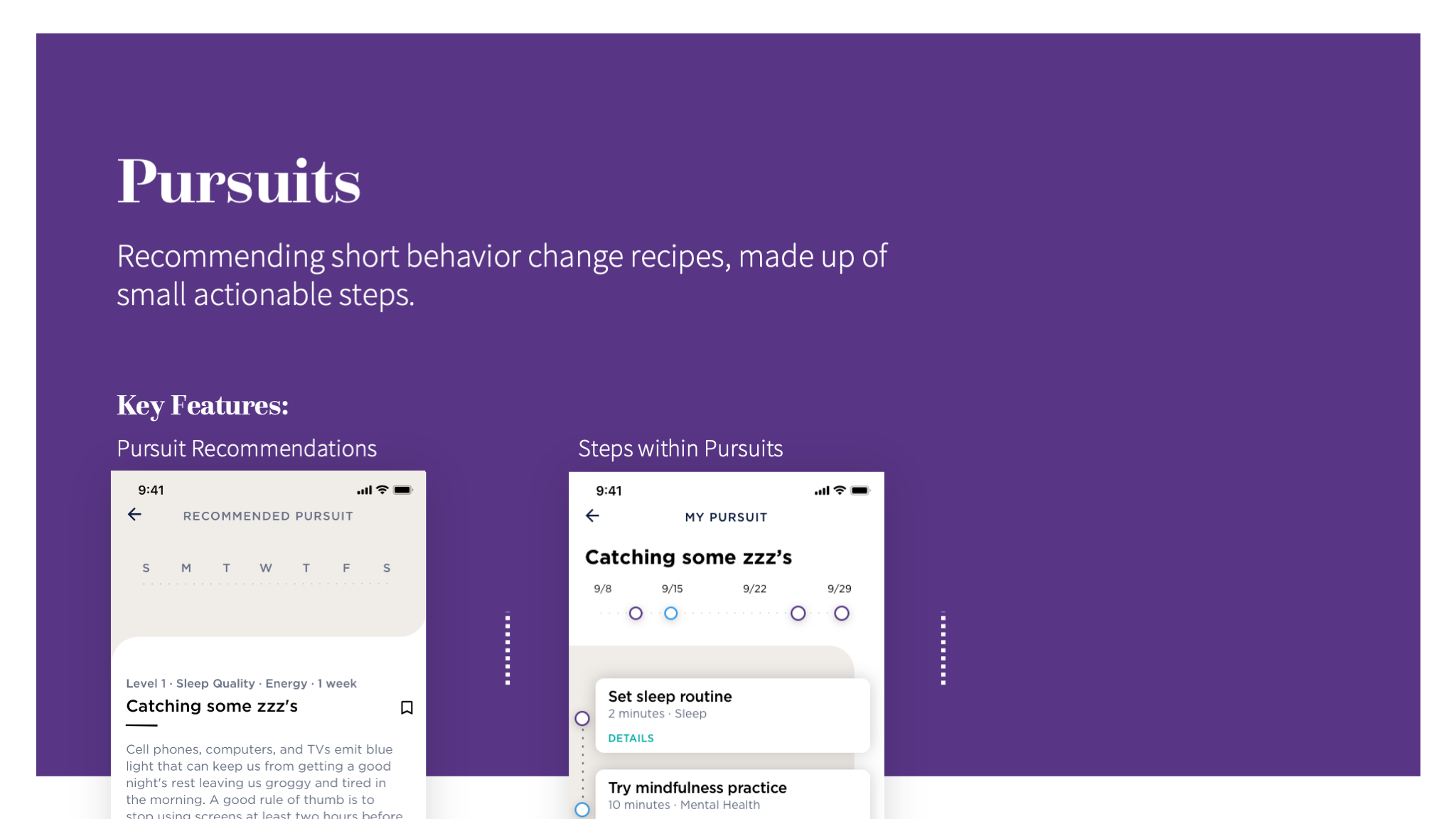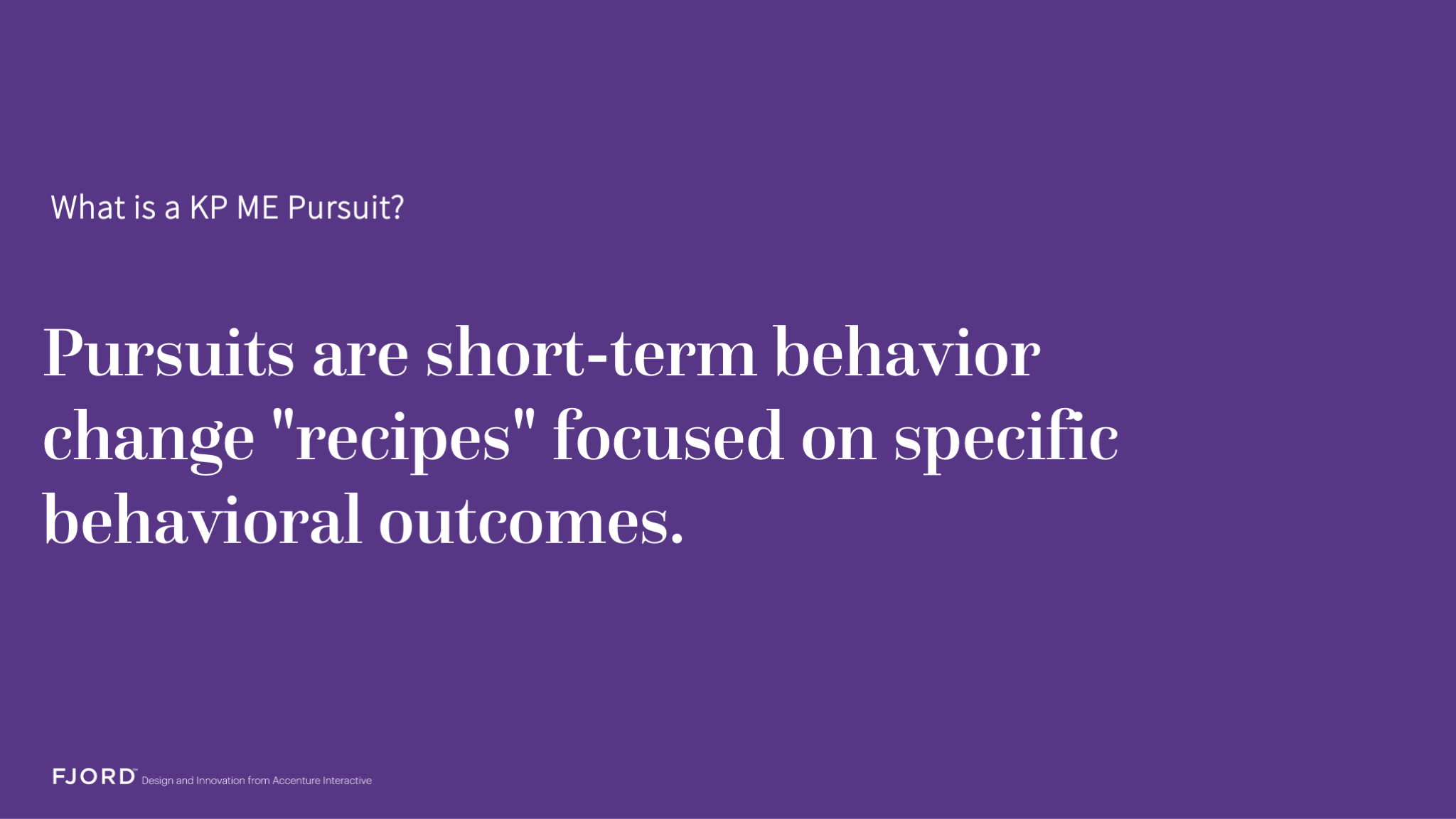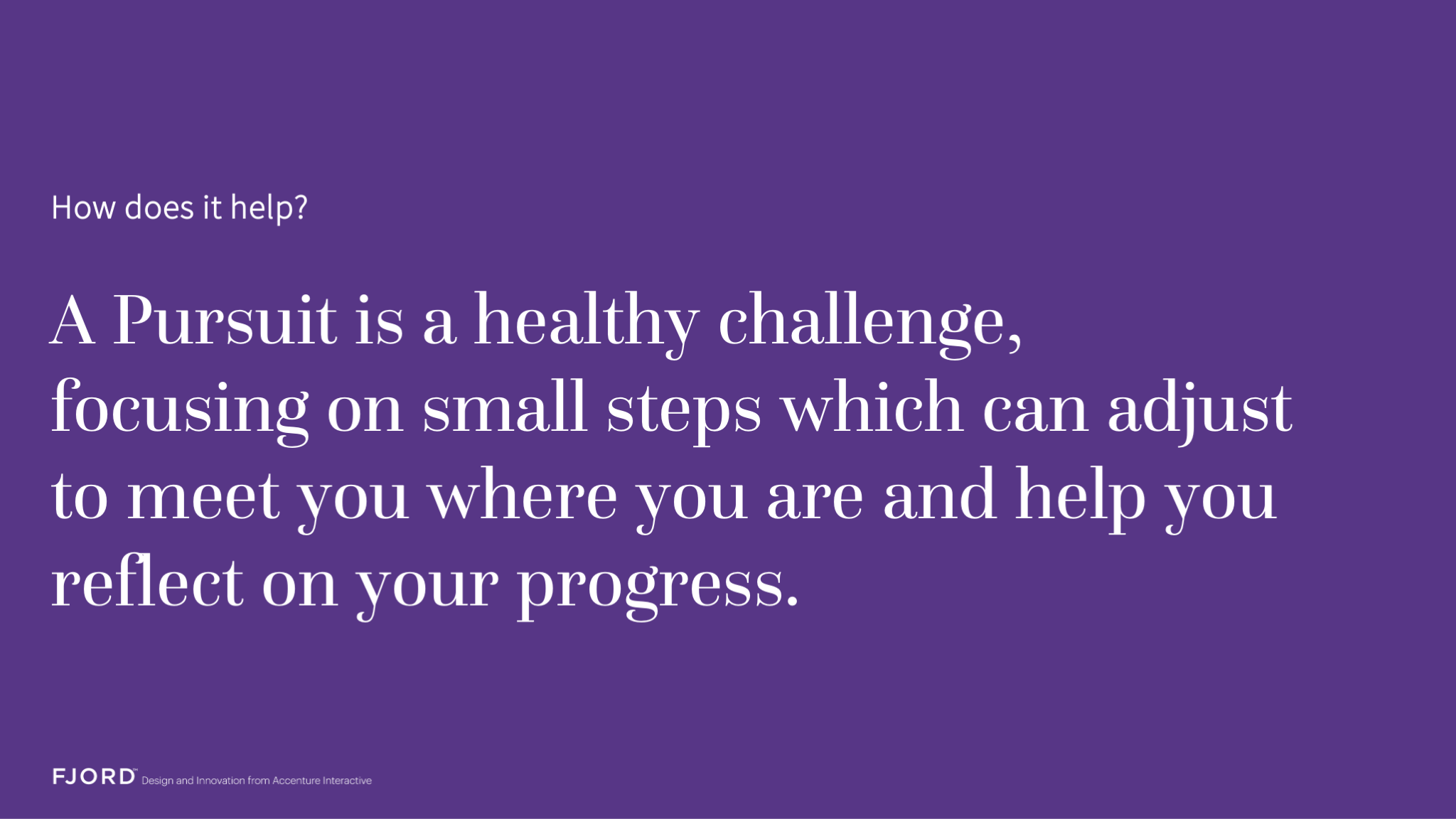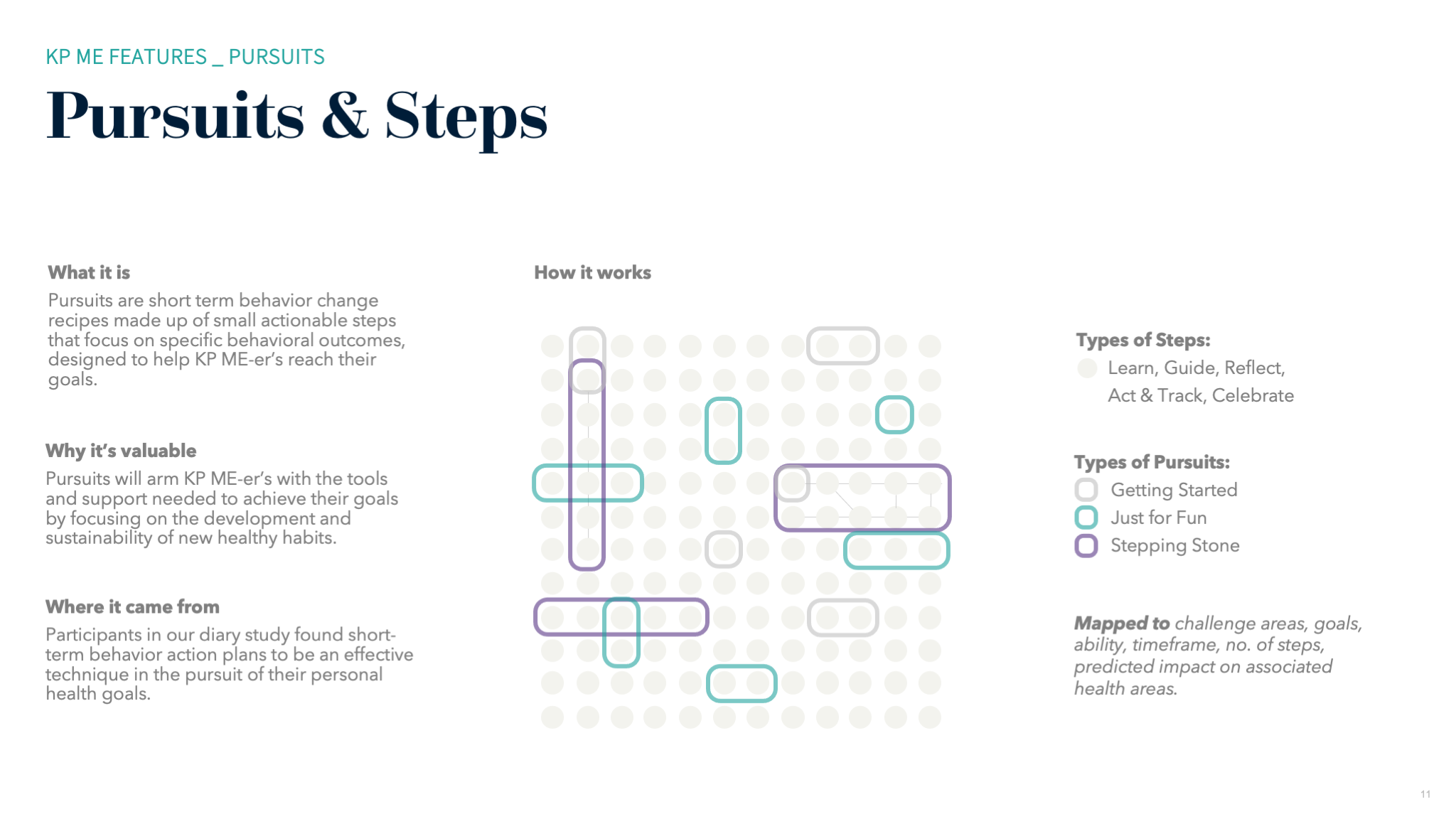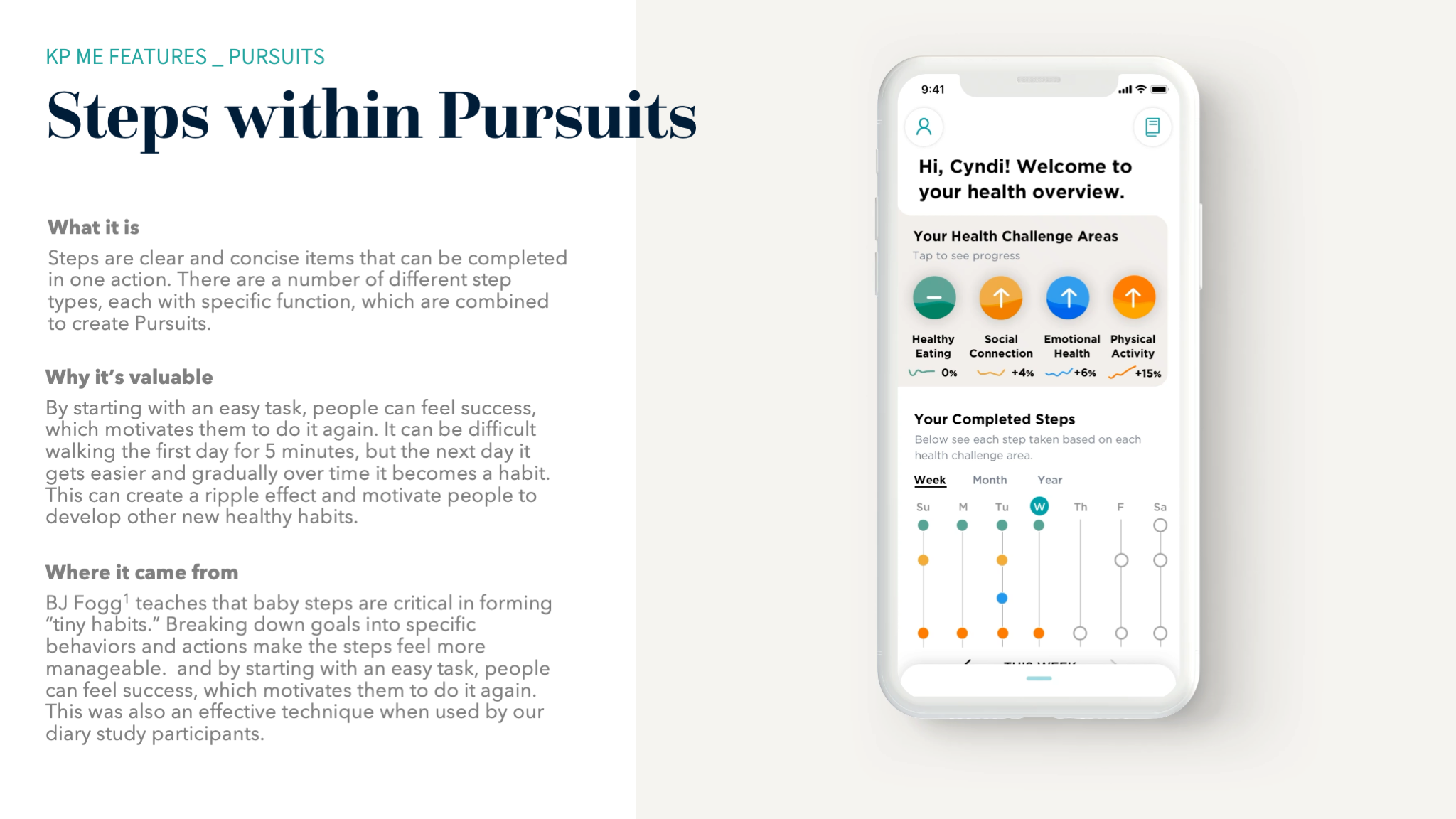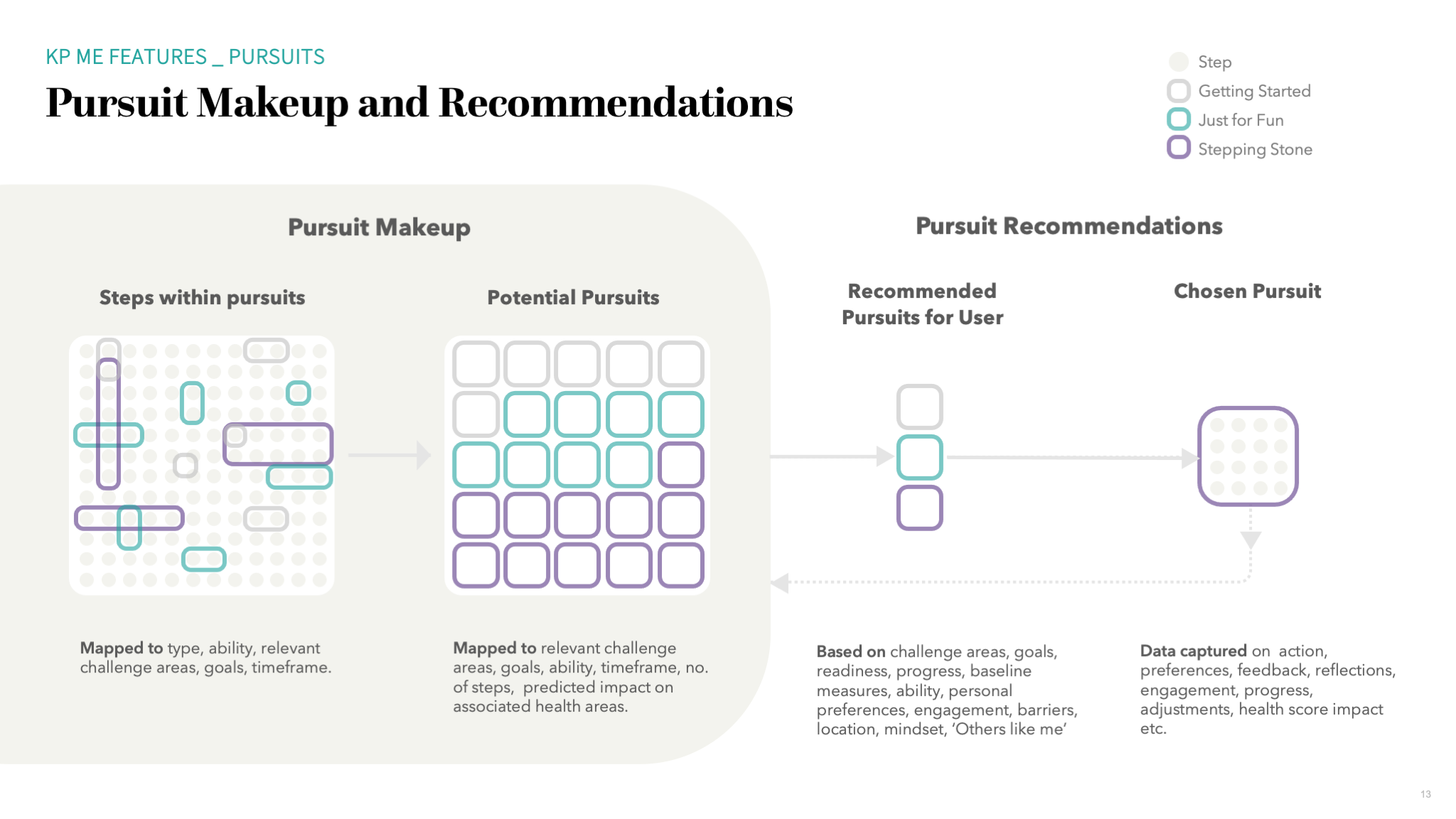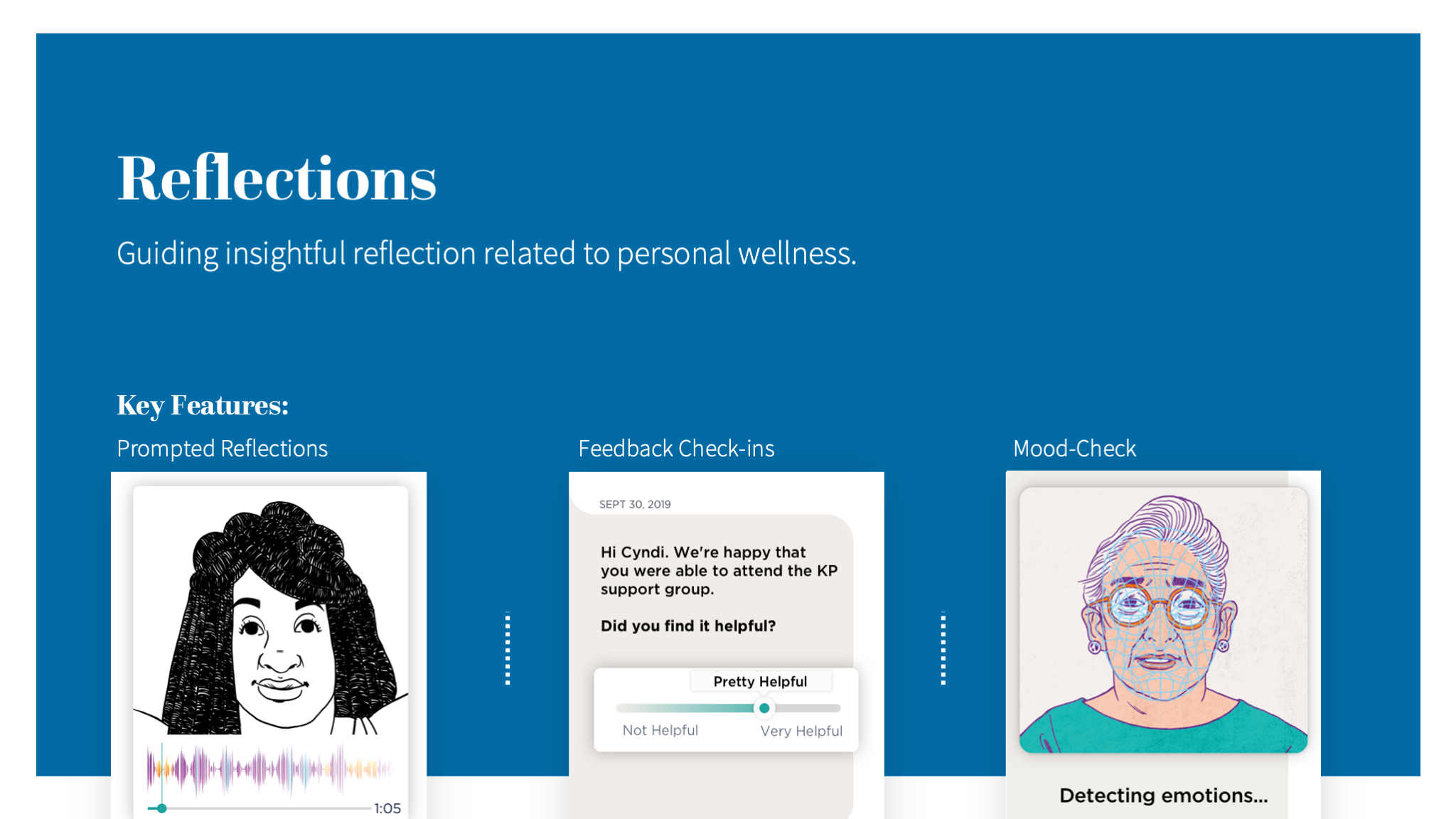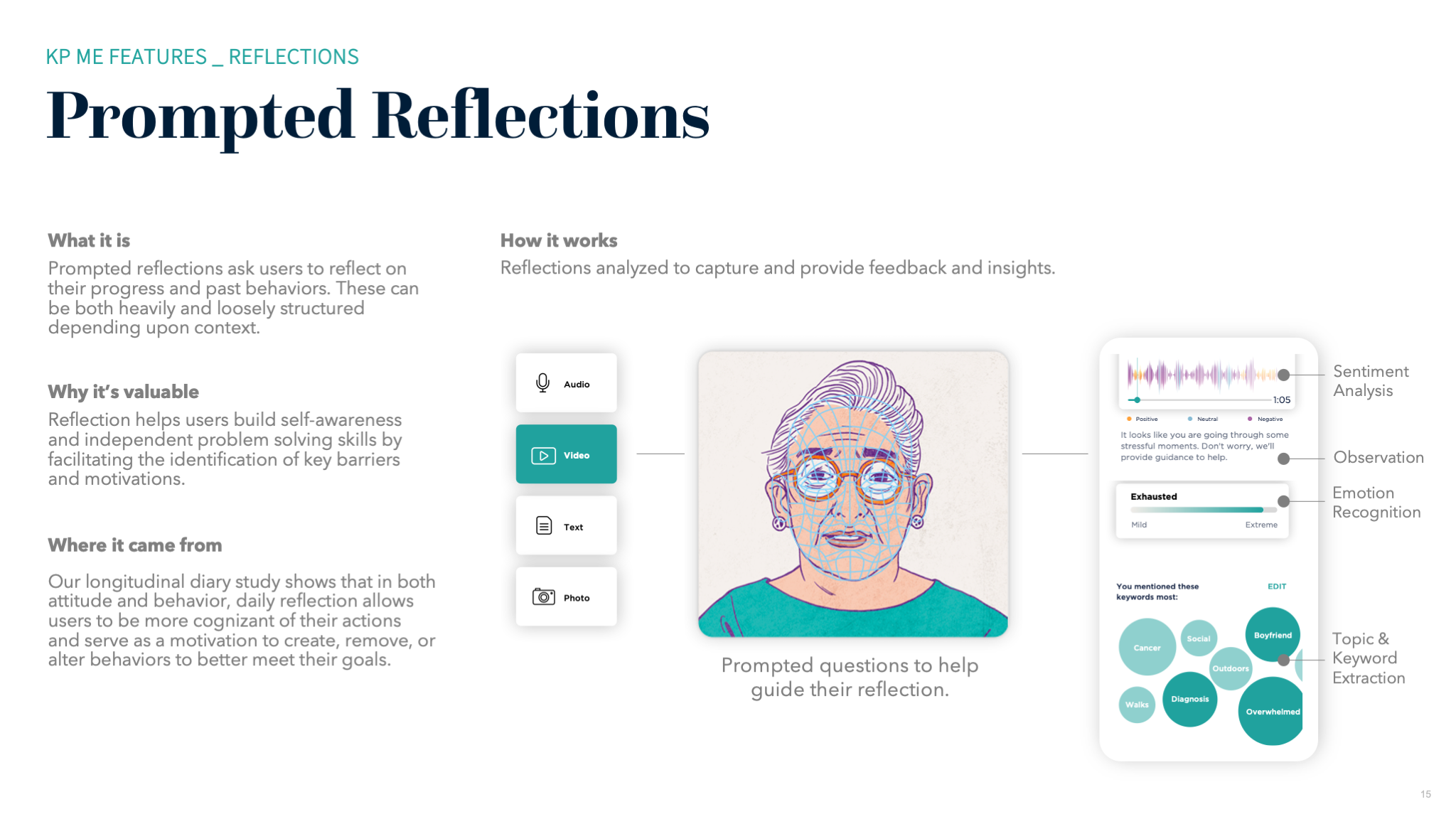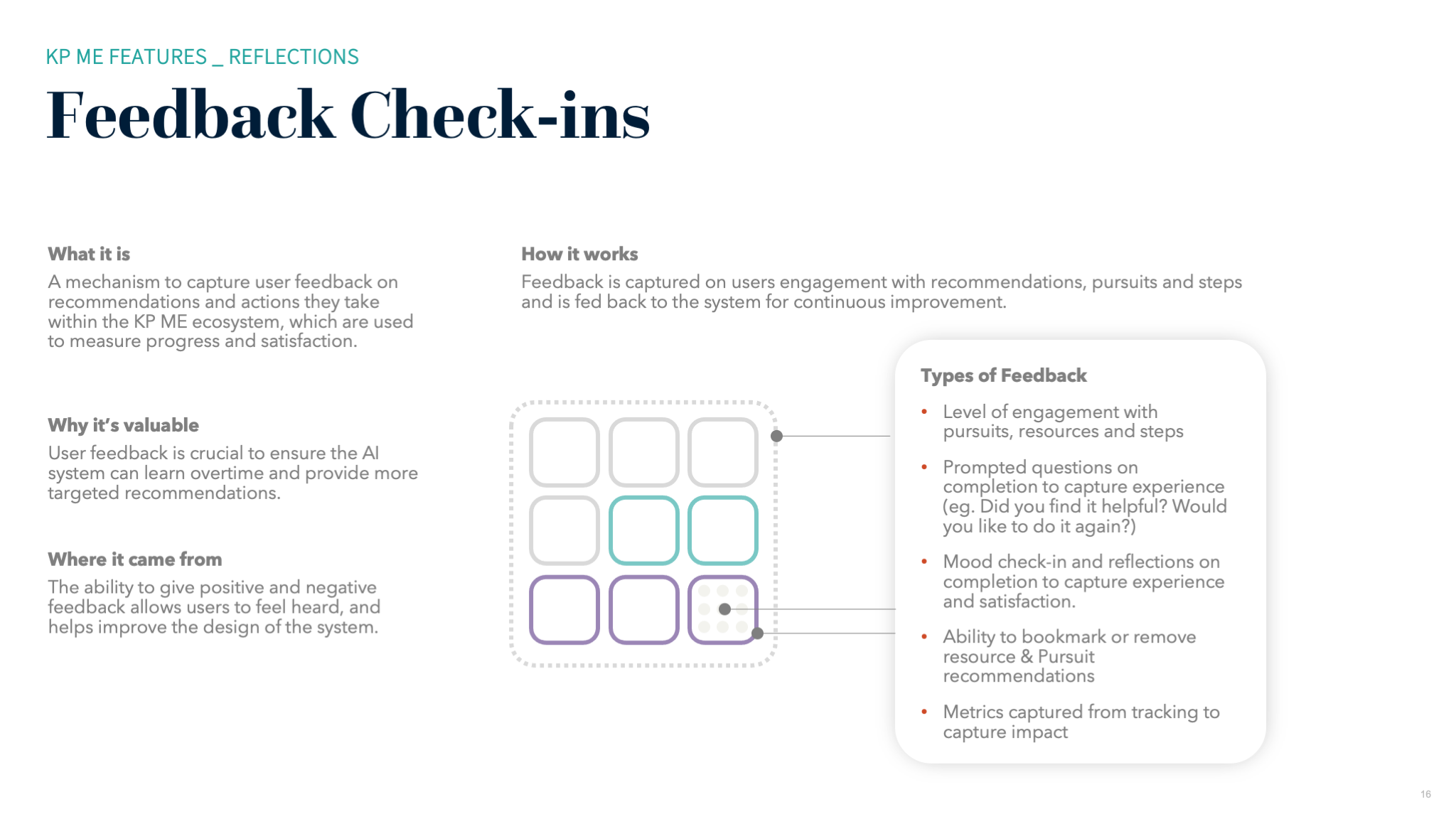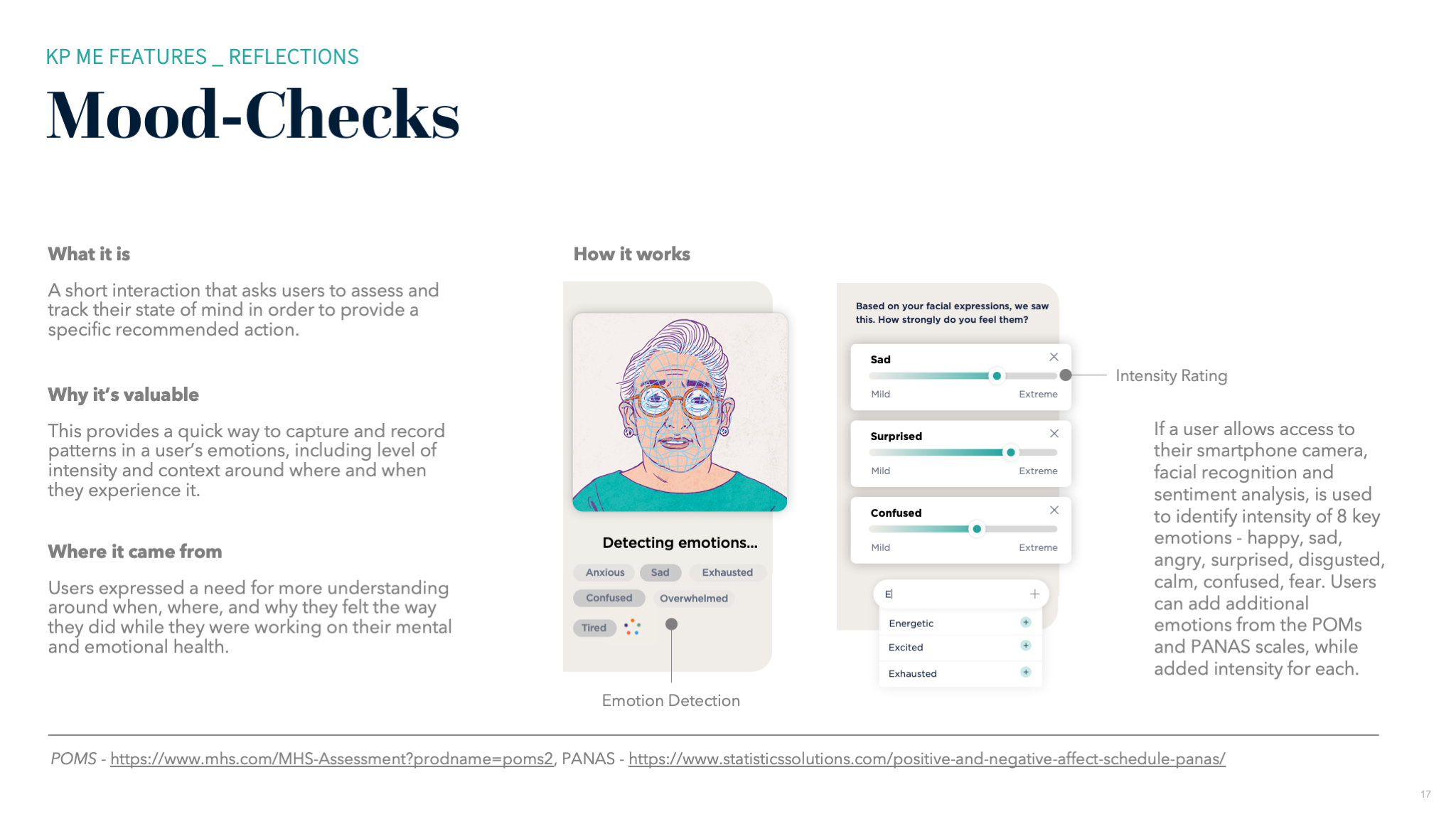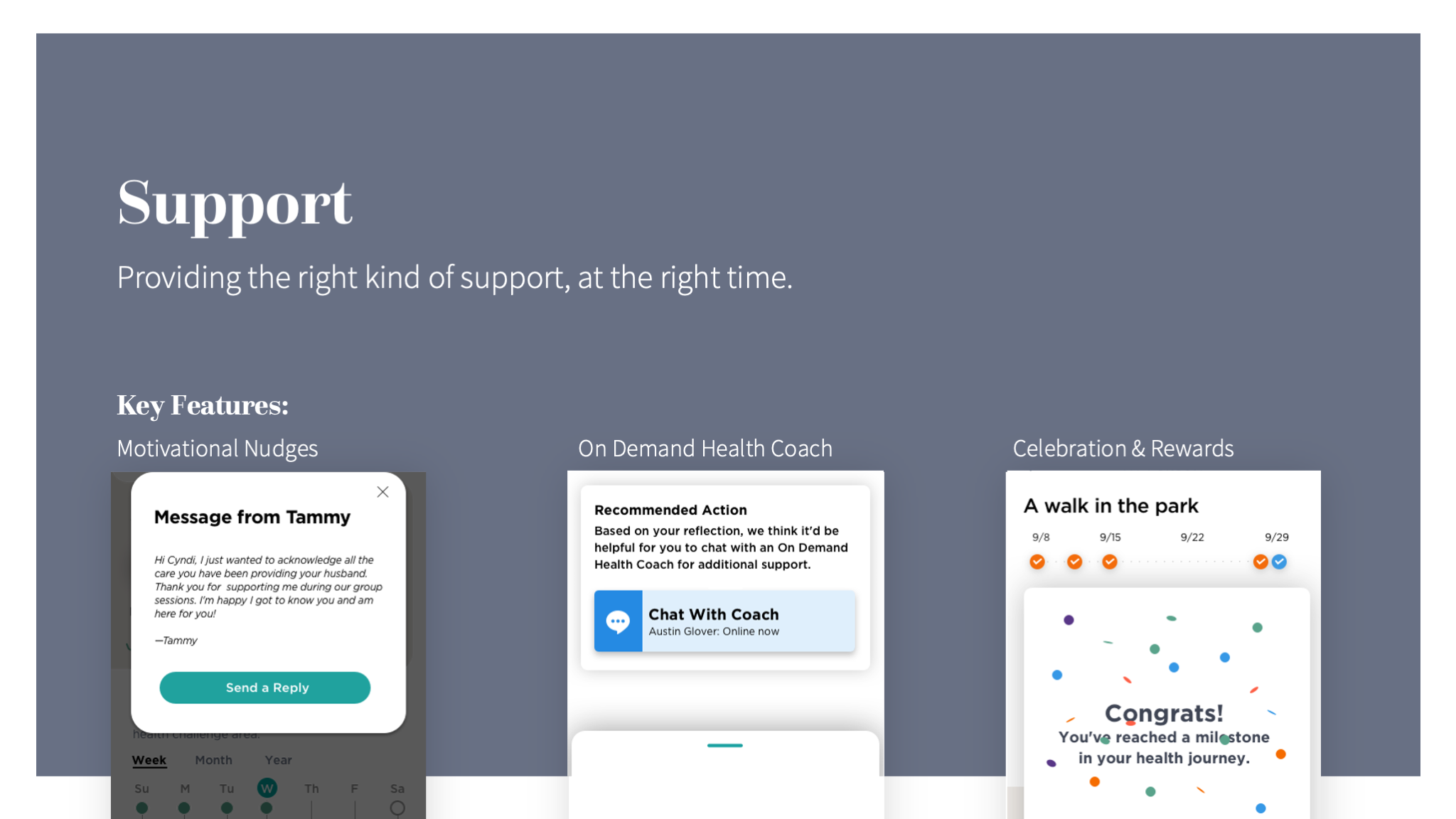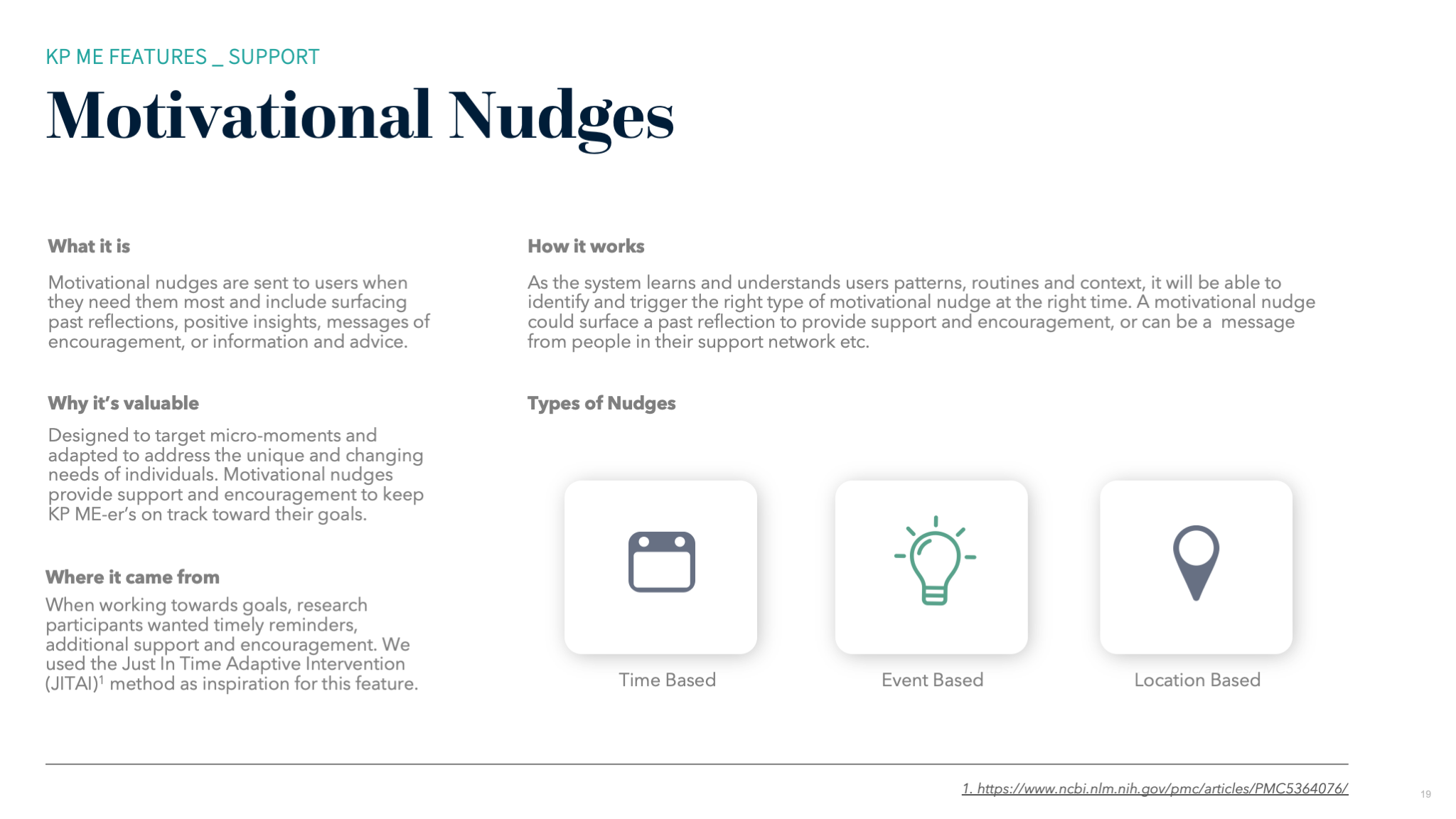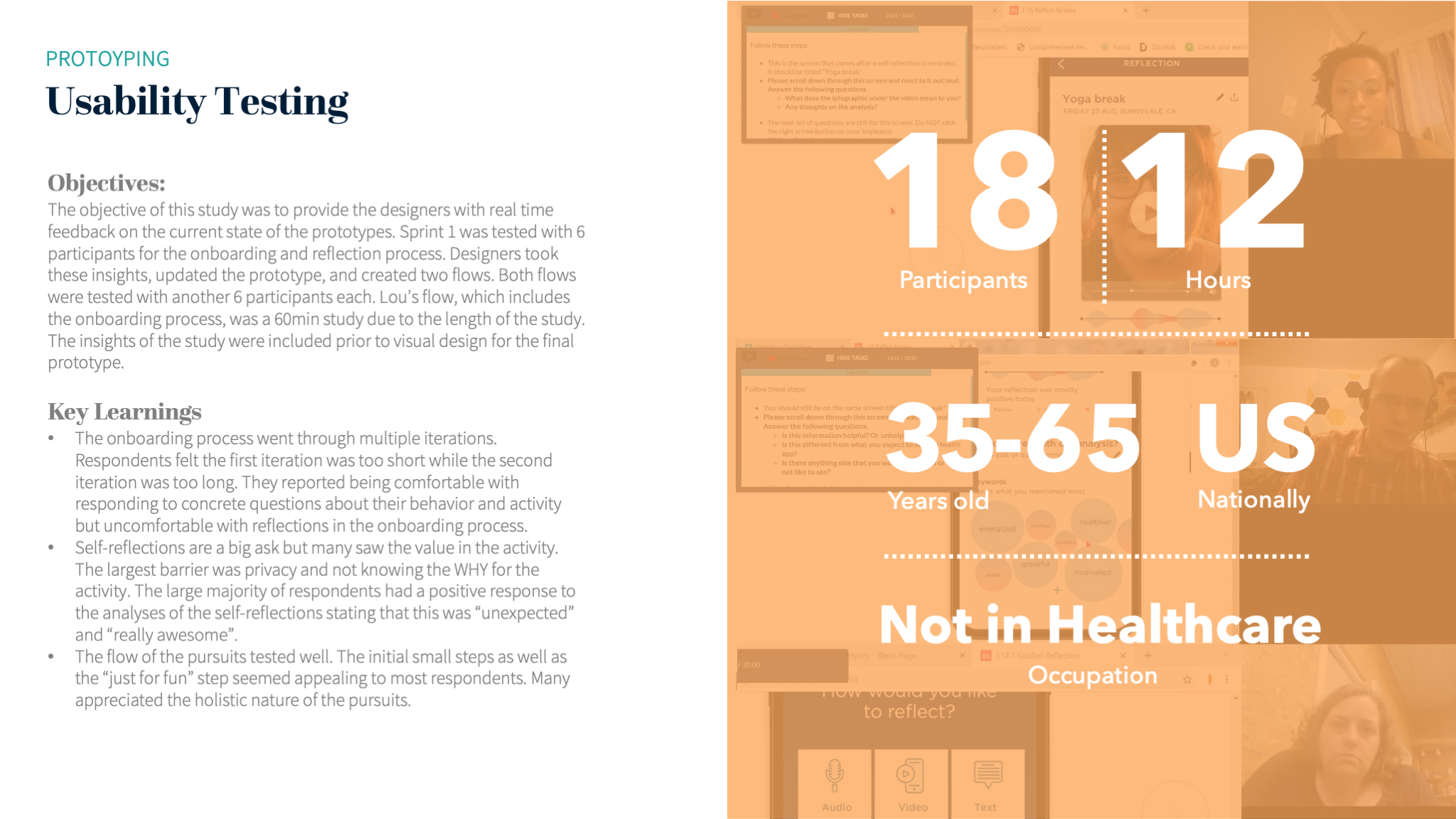The Challenge
Personal behavior is the #1 factor influencing health outcomes – more than genetics, social factors, or medical care. 97% of Americans don’t live a healthy lifestyle and 48% of American adults report lying awake at night due to stress. While we are trying to improve, only 16% of people only report being very successful at health-related improvements.
What was Involved
To tackle this challenge and bring to life Kaiser Permanente’s north star vision, over 17 weeks we conducted extensive primary and secondary research, created and tested 4 service concepts, designed and prototyped key features of both the digital product and coaching services, established the data model, and defined the business strategy, value case, architecture and roadmap. Finally, in an additional 6 weeks we piloted key features in a qualitative and quantitative study to measure behavior change and health outcomes.
For the purposes of this case study, I will deep dive on 4 of the key activities that I was most involved in.
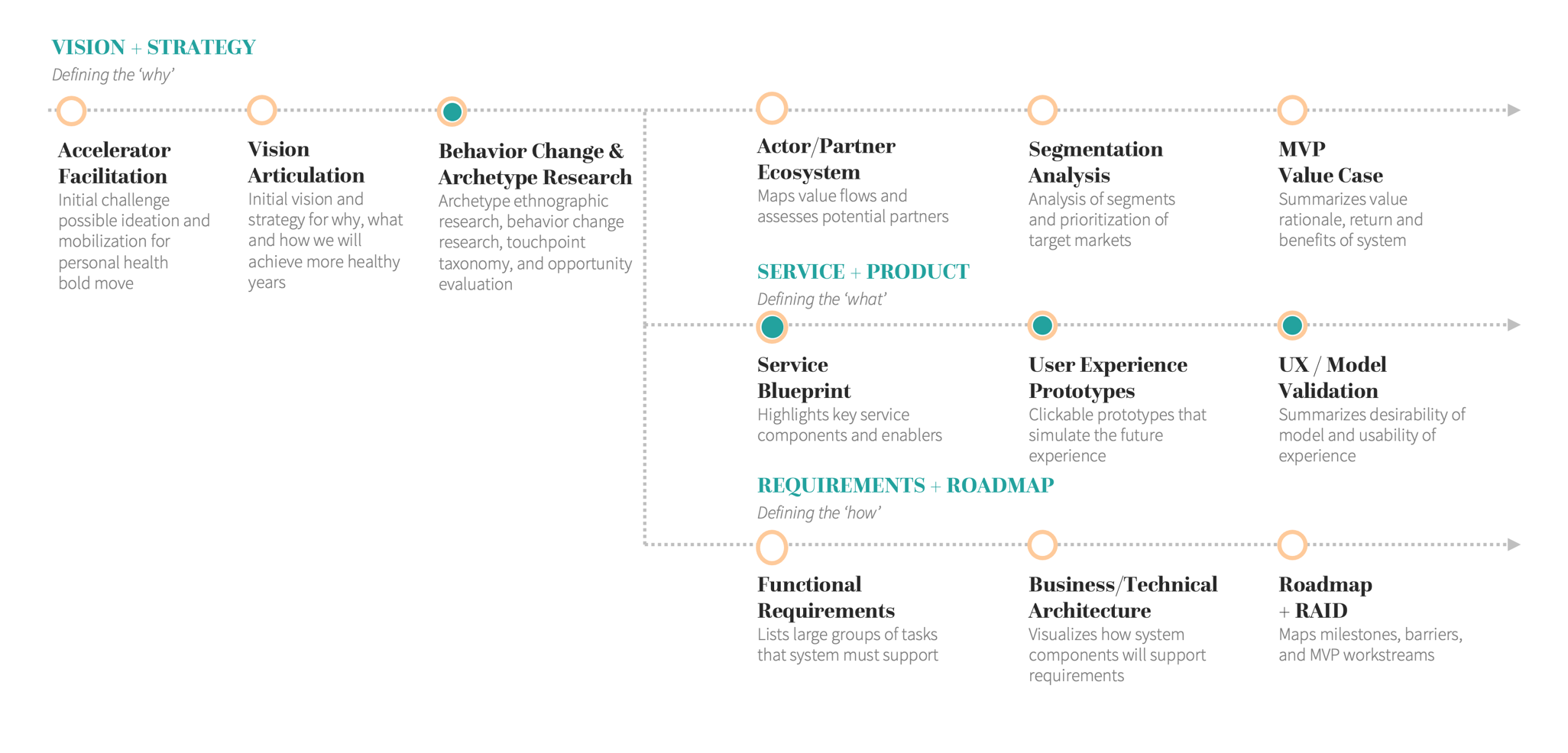
1. Behavior Change & Archetype Research
Throughout the course of 10 weeks, we talked to a total of 71 people around their health behaviors and aspirations. We conducted in-home interviews and launched an online diary study. We also did extensive research on behavior change methodologies, theories and frameworks.
We set out to understand how people define personal health and make progress toward their aspirations, and to identify the most effective behavior change techniques.
My responsibilities in this phase included, but were not limited to the following:
- Led the Behavior Change Research track, planning all activates and owing all related deliverables.
- Worked closely with the ethnographic research track, upskilling team design researchers on behaviour change methodologies and infusing learnings into interview protocol and synthesis.
- Conducted client stakeholder interviews and user home interviews.
- Planned and facilitated weekly client collaboration workshops to immerse them in the process and key learnings at each stage.
2. Key Findings & Behavior Change Design Strategy
We synthesized our primary and secondary research, creating guiding insights, personal health decision mindsets and a behaviour change strategy and technique taxonomy that allowed us to define an initial focus area and target users.
3. Concept Design & Testing
Our extensive research grounded our next phase of ideation and formed guardrails to focus our ideation process. Our team ran multiple ideation session with our wider client sponsors to ideate, iterate and prioritize concepts to bring forward into our desirability testing with our users.
As the design process was new to our clients, documentation and tracking of the process and how ideas evolved was hugely important. I took it upon myself to track our process as rigorously as possible in our extremely tight timeframe, using the Elito method, to ensure our clients felt comfortable and confident in the princess to move forward at each stage.
4. Service Blueprinting
Before jumping into prototyping, it was important to map out the end to end hypothesis of what our proposed solution would consist of from a user experience, business and technology perspective to ground all of our work tracks in a shared vision.
I led the multidisciplinary co-creation our E2E service blueprint over 2 days and owned our living blueprint document to ensure all Accenture/Fjord/Client teams updated weekly to reflect continued learnings and progress.
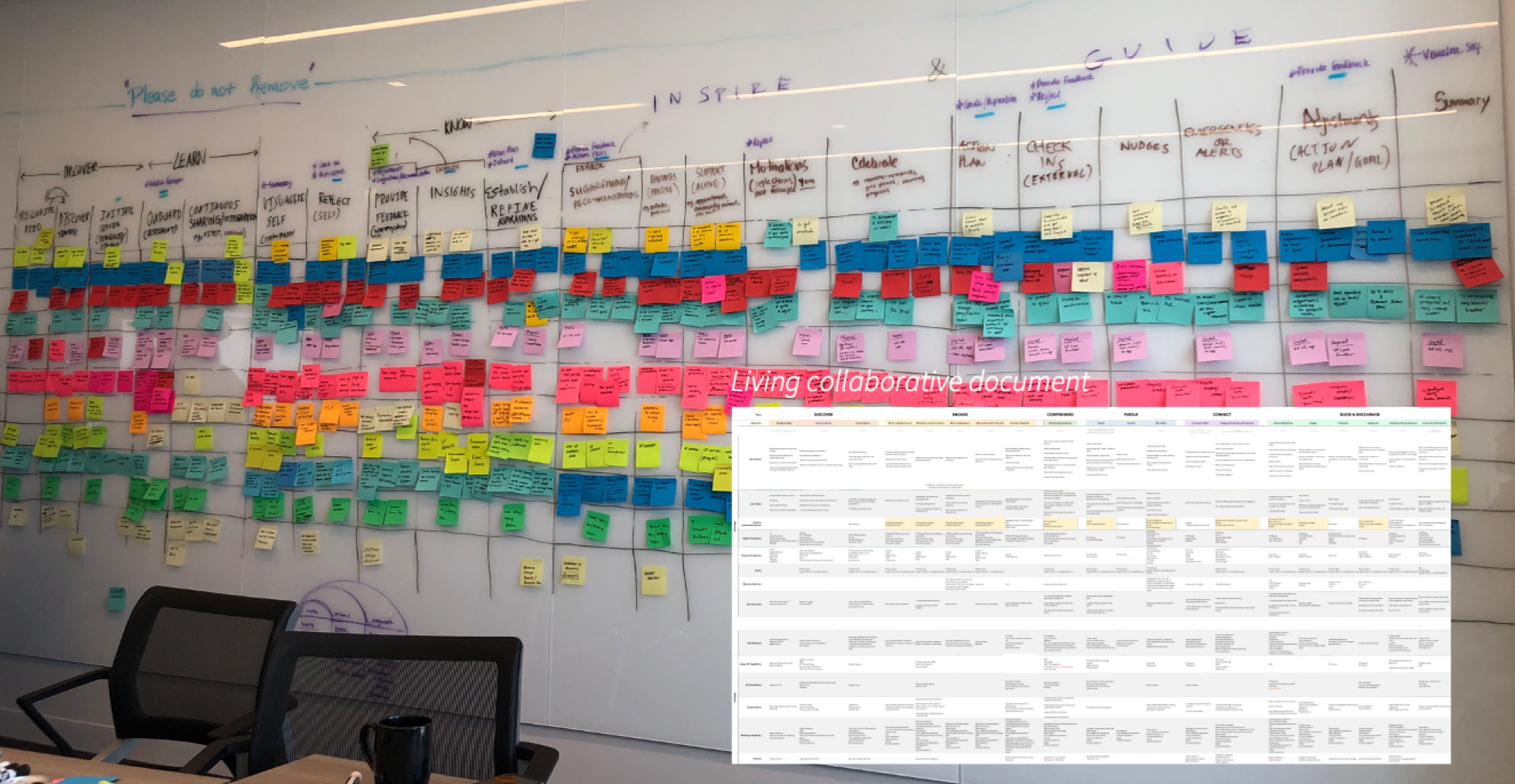
6. Feature Design & Prototyping
At this early stage, the purpose of our prototypes was to gain buy-in from the wider client organization for further funding and development, but also create a framework and design system to continue throughout further detailed design phases. Therefore, both storytelling and UX/UI design were key considerations when designing the prototypes and defining a medium for sharing.
After prioritising our feature set and capabilities using the DVF framework, our team of 5 designers split into 2 tangential tracks to tackly 2 features each sprint. We worked closely to ensure our behaviour change learnings were being upheld and our designs aligned to our interaction model.
My responsibilities included, but were not limited to the following:
- Collaborated with health coaches and client behaviour change SME’s to learn from and incorporate tried and tested content and techniques into our designs.
- Drove rigorous feature design definitions, content blueprints and logic to ensure digital features were grounded in behavioural design theories and techniques and feasible in terms on data/tech/expert content.
- Led 1 of 2 UX/UI sprint teams, providing guidance and feedback and setting up our prototyped for remote user testing.
- Point of contact between the design track and the strategy/technology teams to ensure our progress and deliverables was aligned.
The Result
KP ME is a behavior and lifestyle recommendation system that learns about you and adapts to your needs. It generates personalized action plans and allows you to track, reflect on, and celebrate your progress. KP ME is like a personal health coach that leverages your data, along with KP’s vast research and resources, to guide you and give you real-world insights that support you in your unique health and wellness journey.

Outcomes & Impact
In a 4-week, 87-person study to validate efficacy, 80% of participants previously contemplating behavior change moved to actively working on a goal. In addition, clinical measures of health outcomes (using SF36 Health Survey) showed statistically significant improvement for all possible goals – move more, eat healthier, sleep better and stress less – with the greatest improvement in sleep better and stress less.
Password Protected
Please contact me on gemmagallagher@outlook.ie for access.

